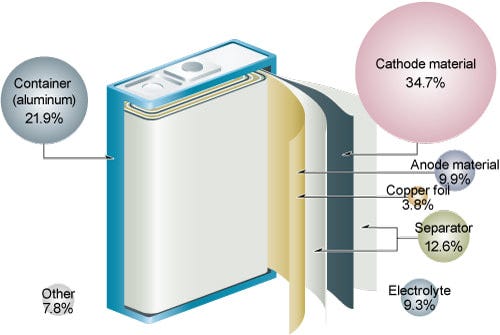How Li-ion Battery Materials Differ From Single Li-ion Cells?

Lithium ion batteries (LIB) are among the most prominent rechargeable batteries used across several industries including aerospace, portable electronics, electric vehicle and military. These batteries are known for their impeccable energy density, low self-discharge rate and no memory effect. Some of the common LIBs are lithium iron phosphate (LiFePO4), lithium cobalt oxide (LiCoO2), lithium nickel manganese cobalt oxide (LiNiMnCoO2) and lithium manganese oxide (LiMn2O4).
A common misconception that most of the people have is that lithium ion battery materials and Li-ion cells are just the same. However, the reality is far from that. LIBs dramatically vary from the Li-ion cells and this article explains it all.
Difference Between Li-ion Battery Materials and Li-ion Cells
The LIBs and Li-ion cells differ from each other in terms of their charging procedure. In case of LIBs, the charging occurs in three stages:
- Constant Current (CC)
- Balance
- Constant Voltage (CV)
While for Li-ion cells the same procedure occurs in two stages i.e. Constant Current and Constant Voltage. In the CC phase, a charger applies direct current to LIB by steadily increasing the voltage, until the desired limit is achieved. Next, in the balance stage, charger decreases CC, keeping the state of charge for individual cells at the same level, so as to balance the circuit. At last, in CV phase, charger applies voltage equivalent to maximum Li cell voltage, because current declines to 0. Failure to meet the voltage and current limitations would result into an explosion.
In addition to this, the charging temperature for materials used in li-ion batteries is stricter compared to the cells. Though LIBs perform well at a high temperature, but constant exposure to excessive heat deteriorates their battery life.
So, when planning to buy lithium ion battery materials, analyze how exactly do they differ from its counterparts and then choose the best.



Comments
Post a Comment